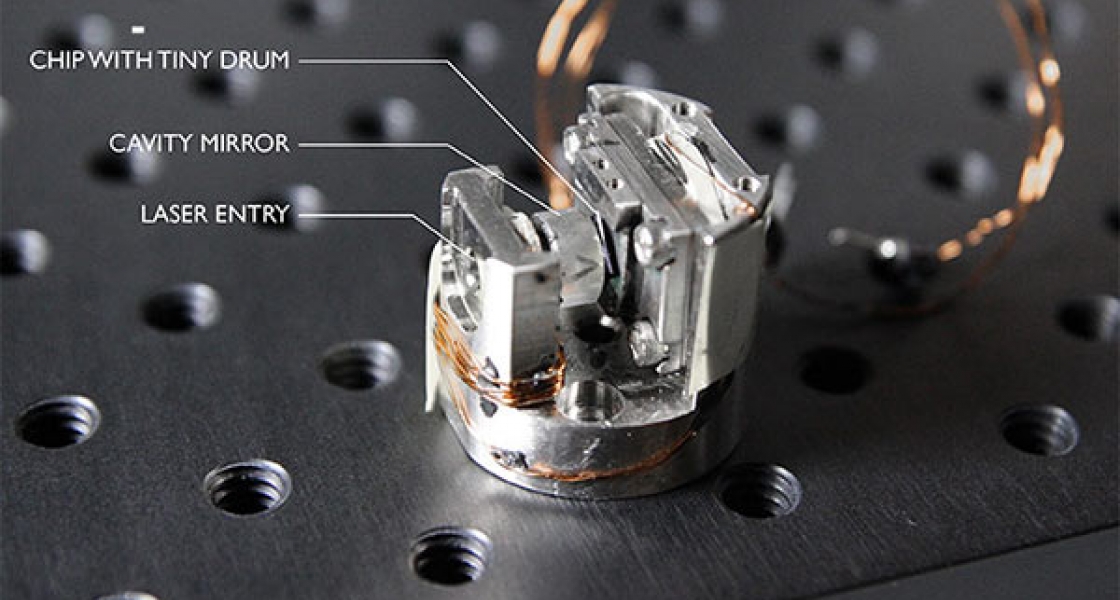Research associate Tom Purdy and his colleagues in the Regal group have just built an even better miniature light-powered machine that can now strip away noise from a laser beam. Their secret: a creative workaround of a quantum limit imposed by the Heisenberg Uncertainty Principle. This limit makes it impossible to simultaneously reduce the noise on both the amplitude and phase of light inside interferometers and other high-tech instruments that detect miniscule position changes.
Purdy’s team got around this limit by squeezing the quantum state of their laser light. In so doing, the researchers reduced the amount of quantum “noise” in the amplitude, making it possible to use the squeezed laser light to make more precise measurements. However, the noise reduction in the light amplitude came at the cost of increasing the amount of quantum noise in the phase of the laser light. Thus, Purdy didn’t violate the laws of quantum mechanics by squeezing laser light.
Rather, he and his colleagues built a nifty little squeeze machine that applied these laws. They squeezed the laser light by having it interact with a tiny vibrating drum inside an optical cavity. The use of the drum is a key feature of the new machine because it could provide tailored squeezed light for interferometers for precision measurement.
Here’s how the experiment worked: The laser light exerted a force on the drum inside the cavity, causing it to move. This motion caused a shift in the light phase, which linked together the phase and the amplitude of the light field inside the cavity. Taking advantage of this linkage, the researchers were able to arrange for the amplitude of the light to have 32% less quantum noise than it otherwise would have had! As an added bonus, the team was able to show squeezing over different ranges by looking at various combinations of the amplitude and phase noise.
This exciting experiment holds great promise for improving precision measurement in gravitational-wave detectors and in state-of-the-art microscopy. -- Julie Phillips



 The Physics Frontiers Centers (PFC) program supports university-based centers and institutes where the collective efforts of a larger group of individuals can enable transformational advances in the most promising research areas. The program is designed to foster major breakthroughs at the intellectual frontiers of physics by providing needed resources such as combinations of talents, skills, disciplines, and/or specialized infrastructure, not usually available to individual investigators or small groups, in an environment in which the collective efforts of the larger group can be shown to be seminal to promoting significant progress in the science and the education of students. PFCs also include creative, substantive activities aimed at enhancing education, broadening participation of traditionally underrepresented groups, and outreach to the scientific community and general public.
The Physics Frontiers Centers (PFC) program supports university-based centers and institutes where the collective efforts of a larger group of individuals can enable transformational advances in the most promising research areas. The program is designed to foster major breakthroughs at the intellectual frontiers of physics by providing needed resources such as combinations of talents, skills, disciplines, and/or specialized infrastructure, not usually available to individual investigators or small groups, in an environment in which the collective efforts of the larger group can be shown to be seminal to promoting significant progress in the science and the education of students. PFCs also include creative, substantive activities aimed at enhancing education, broadening participation of traditionally underrepresented groups, and outreach to the scientific community and general public.